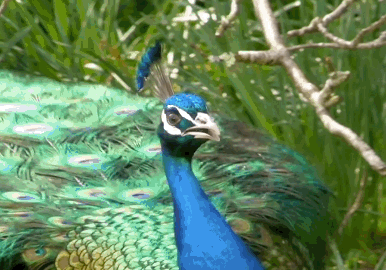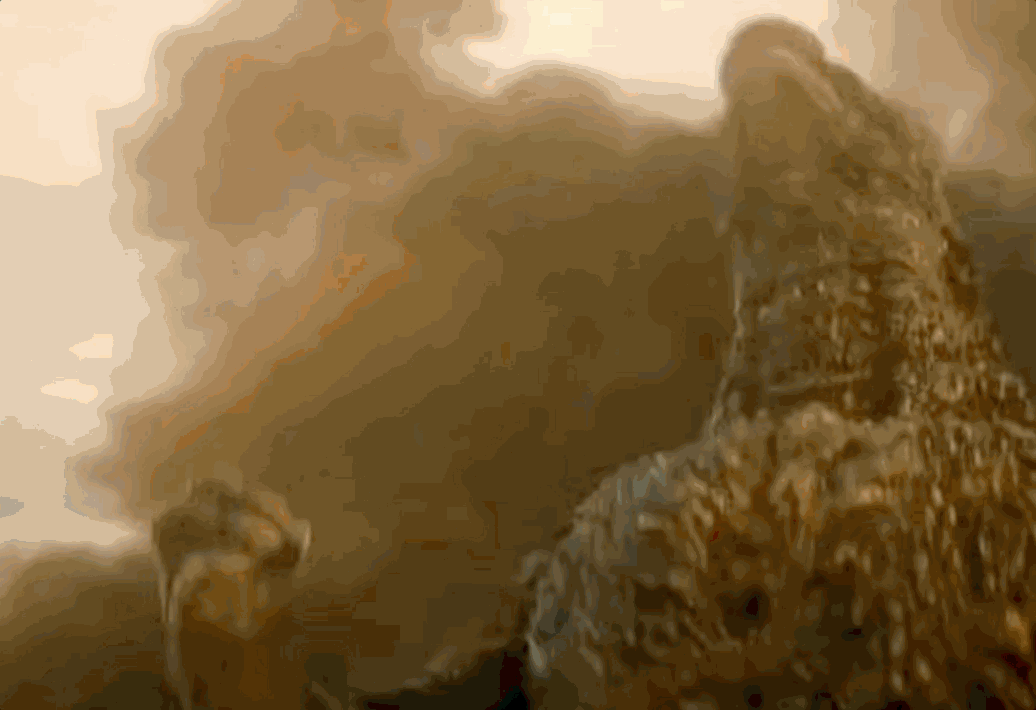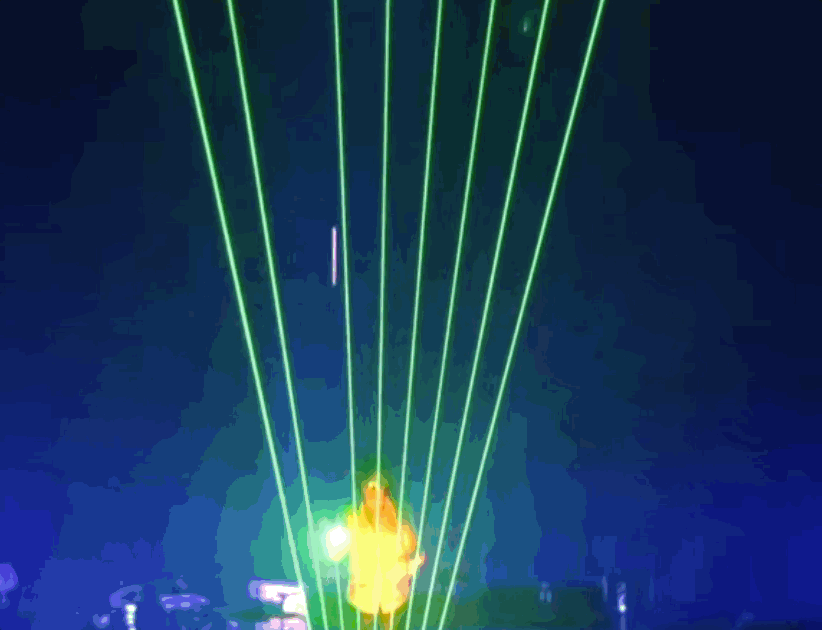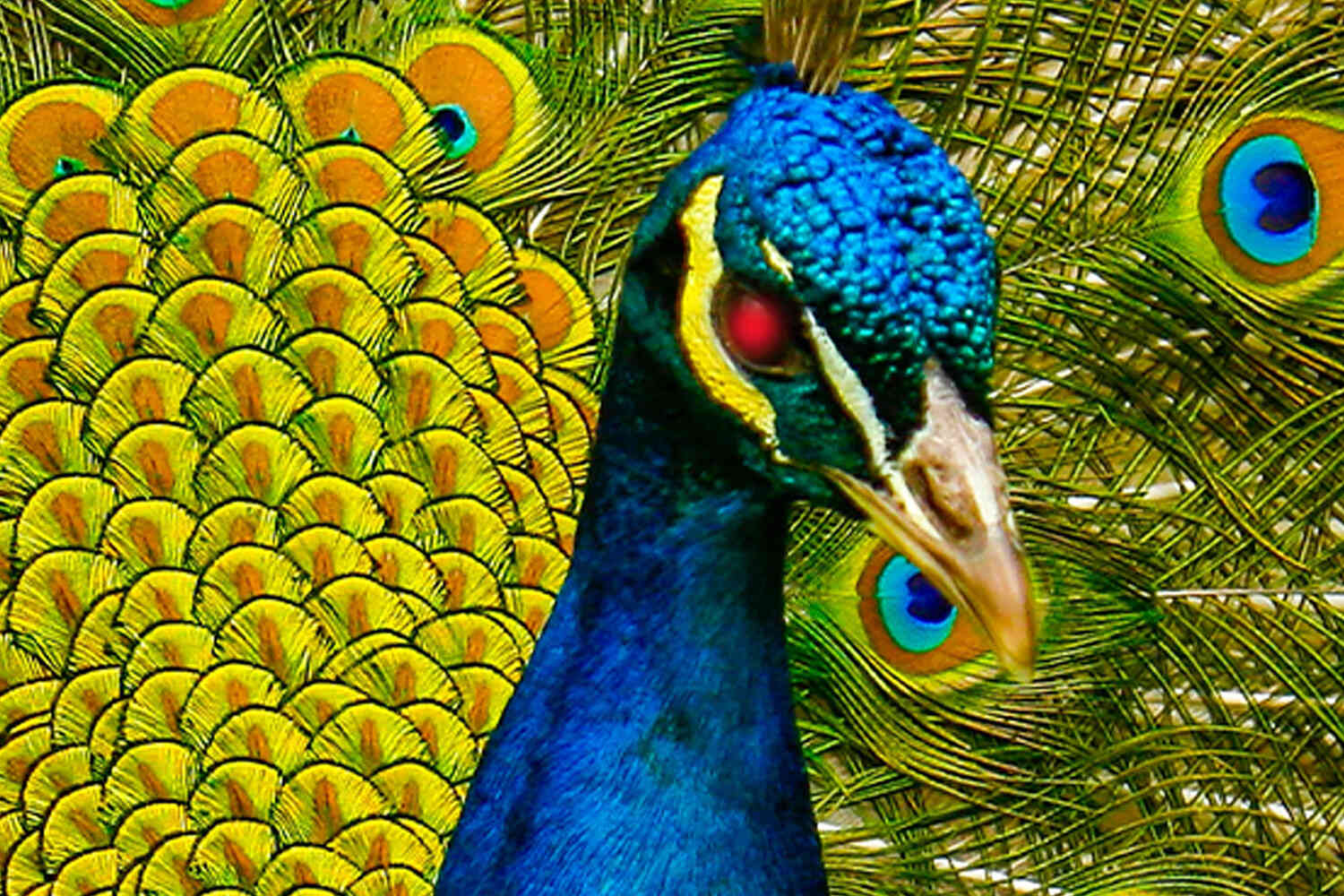For centuries the peacock has been justly renowned for its ability to absolutely wow the socks off everybody with its feathery display.

And for centuries that's been enough! The peacock hasn't needed any other superpowers.
Until now. Via Ars Technica:
Peacock feathers are greatly admired for their bright iridescent colors, but it turns out they can also emit laser light when dyed multiple times, according to a paper published in the journal Scientific Reports. Per the authors, it's the first example of a biolaser cavity within the animal kingdom.
A "biolaser cavity?"
Pretty sure I know how this one ends!

Okay, thankfully, we won't have any Godzilla-style peacocks running around the National Zoo anytime soon. And scientists had to go to some lengths to even coax the laser beams from the peacock feathers in the first place. So I think we're all safe.
Still, it's neat. As Ars Technica notes, a peacock's colorful feathers are due in part to "how they are structured." It's not just straight-up coloration, but also a complex process of light refraction, that gives the feathers their characteristic hue.
Scientists exploited this interesting feature to develop their successful peacock feather laser test:
They cut away any excess lengths of barbs and mounted the feathers on an absorptive substrate. They then infused the feathers with common dyes by pipetting the dye solution directly onto them and letting them dry. The feathers were stained multiple times in some cases. Then they pumped the samples with pulses of light and measured any resulting emissions.
Now, when I picture scientists "pumping peacock feathers with pulses of light" I want to imagine this:

Alas, as the actual paper makes clear, the result was a bit more underwhelming:
Still, it's neat. And the scientists believe that the research may one day lead to lasers that "could safely be embedded in the human body for sensing, imaging, and therapeutic purposes."
Just nobody tell the peacocks!
P.S. Now check out our latest video 👇







